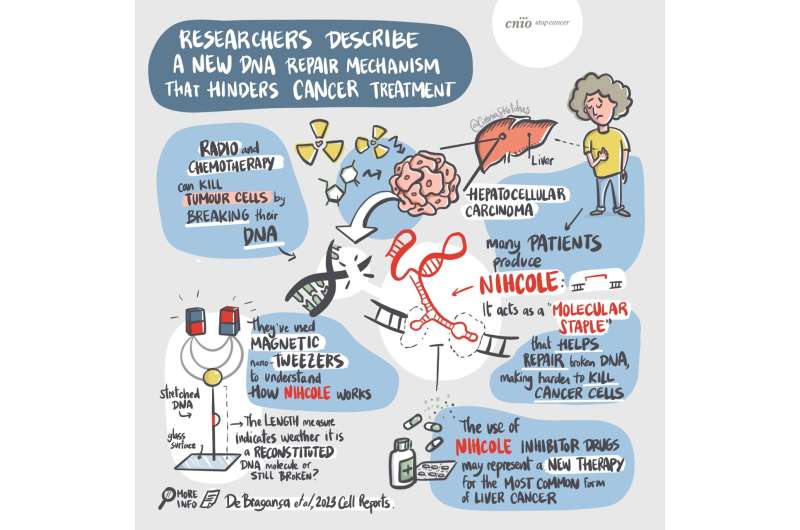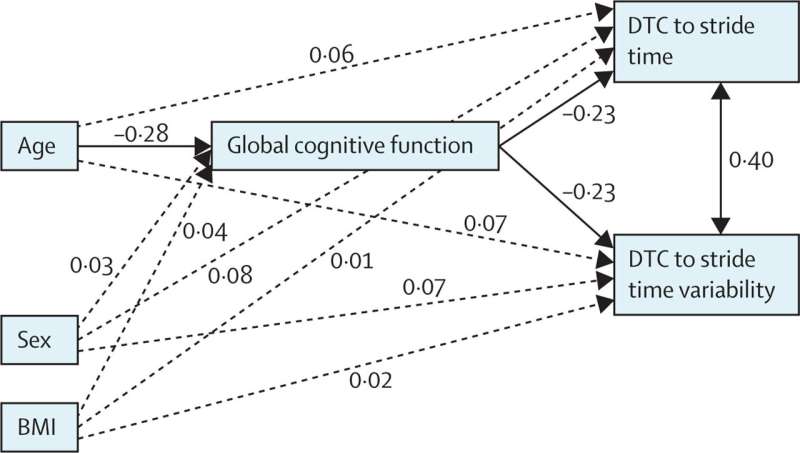
Error-correcting mechanisms are crucial for cells, as a result of with all of the mobile job repeatedly occurring, malfunctions rise up always. However in the case of killing most cancers cells, it’s within the cells’ absolute best passion to urge mistakes. Radiotherapy and chemotherapy may cause mobile defects through breaking the DNA of the cells. Then again, some tumor cells have an exceptionally environment friendly DNA restore equipment that lets them evade most cancers remedy.
In a paper printed in Mobile Stories, Óscar Llorca of the CNIO, Fernando Moreno-Herrero of the CNB and Puri Fortes of the CIMA-College of Navarra have now published the workings of any such peculiar restore programs: a molecular staple that has been proven in motion for the primary time the usage of a brand new nanotechnology method.
Contents
In liver most cancers with the worst analysis
A couple of years in the past, a staff led through Puri Fortes staff found out that about part of sufferers with hepatocellular carcinoma (the most typical form of liver most cancers) produce an RNA molecule known as NIHCOLE, which is located basically in essentially the most competitive tumors and is related to a deficient analysis. Fortes, Llorca and Moreno-Herrero concluded that NIHCOLE may be very efficient at serving to restore damaged DNA, which is why radiotherapy is much less efficient in tumors the place it’s provide. By way of getting rid of NIHCOLE, most cancers cells handled with radiotherapy die extra simply.
Then again, the molecular mechanism through which NIHCOLE facilitates the restore of DNA breaks used to be no longer recognized. The paper simply printed in Mobile Stories explains this: NIHCOLE paperwork a bridge that binds the damaged DNA fragments in combination.
“NIHCOLE interacts concurrently with proteins that acknowledge the 2 ends of a fragmented DNA, as though stapling them in combination,” provide an explanation for Llorca and Moreno-Herrero.
Figuring out this mechanism might assist within the building of methods to battle liver cancers with the worst analysis. “Using NIHCOLE inhibitor medication might constitute a brand new treatment for the most typical type of liver most cancers,” the researchers say.
Magnetic nano-tweezers for stretching DNA
To know the way NIHCOLE works, Fernando Moreno-Herrero’s workforce has used magnetic tweezers, a nanotechnology method that permits the bodily homes of particular person molecules to be studied.
Researchers have designed a DNA molecule that mimics damaged DNA, permitting them to come across the junction between the 2 fragmented ends. First, they connect a tiny magnetic bead, at the scale of 1000th of a millimeter, to at least one finish of the DNA, after which use magnetic nano-tweezers to tug on that finish. The duration of the stretched DNA signifies whether or not this is a reconstituted DNA molecule, by which the damaged ends of the DNA had been joined in combination, or if it is nonetheless damaged.
For the authors of the Mobile Stories paper, those information display that NIHCOLE “confers benefits on tumor cells through serving to them to fix DNA breaks, thereby maintaining the malignant proliferation of most cancers cells regardless of the buildup of DNA harm due to the strain of mobile department itself.”
‘Junk DNA’ this is not junk
NIHCOLE isn’t a protein synthesized through a gene, however an RNA molecule. It is a part of what biologists dubbed junk DNA twenty years in the past when the human genome used to be being sequenced. On the time, they mistakenly believed that this DNA used to be pointless.
Llorca explains, “Probably the most central dogmas of biology is that the ideas contained in each and every gene, in DNA, is translated into proteins. So scientists had been shocked after they found out that best 2% of our DNA contained genes; what used to be the remainder of our genome for? It’s unthinkable that 98% of the genome is junk, pointless DNA. Within the final decade it’s been proven that a part of this darkish genome produces very lengthy RNA molecules, a few of that have a prevalent serve as in most cancers.”
NIHCOLE is any such lengthy RNA molecules, the life and serve as of that have best not too long ago been found out to such an extent that biologists are nonetheless amazed. It’s also unexpected that just a small piece of NIHCOLE is needed for it to behave as a molecular staple.
“This is able to permit the improvement of substances that block or distort this construction, and thus beef up the efficacy of radiotherapy or chemotherapy in most cancers sufferers,” say the authors of the paper.
Additional info:
Sara De Bragança et al, APLF and lengthy non-coding RNA NIHCOLE advertise strong DNA synapsis in non-homologous finish becoming a member of, Mobile Stories (2022). DOI: 10.1016/j.celrep.2022.111917
Quotation:
Probably the most reasons of competitive liver most cancers found out: A ‘molecular staple’ that is helping restore damaged DNA (2023, January 27)
retrieved 1 February 2023
from https://medicalxpress.com/information/2023-01-aggressive-liver-cancer-molecular-staple.html
This report is matter to copyright. With the exception of any honest dealing for the aim of personal find out about or analysis, no
section is also reproduced with out the written permission. The content material is supplied for info functions best.
Supply By way of https://medicalxpress.com/information/2023-01-aggressive-liver-cancer-molecular-staple.html



